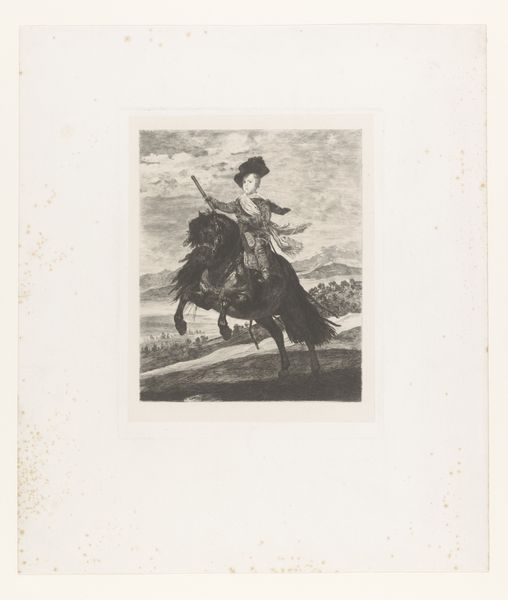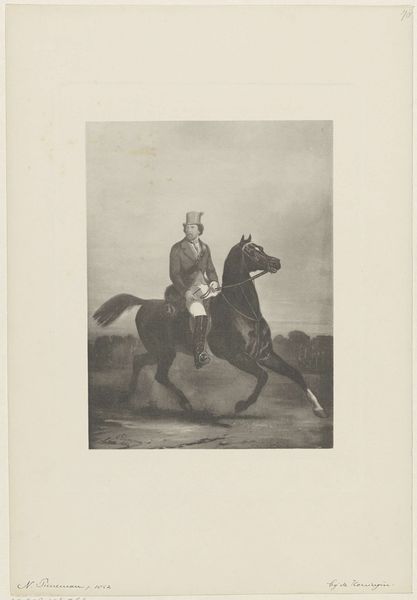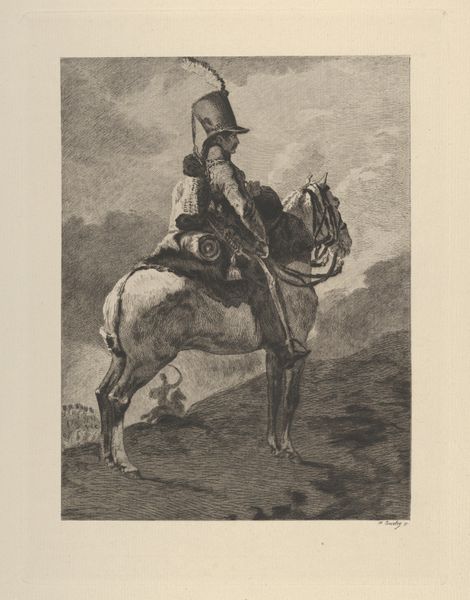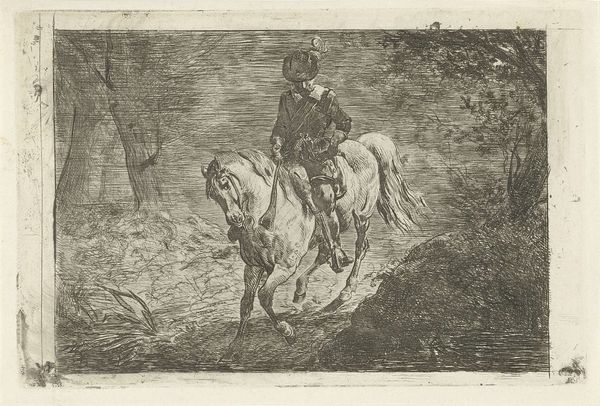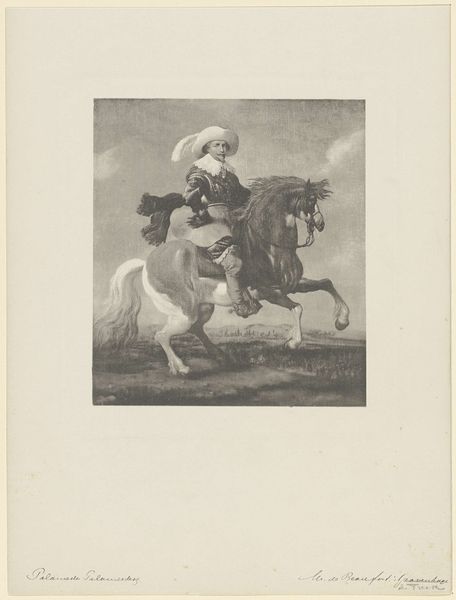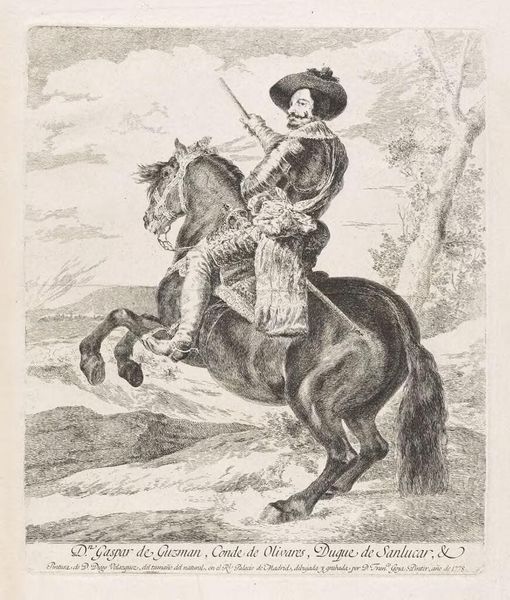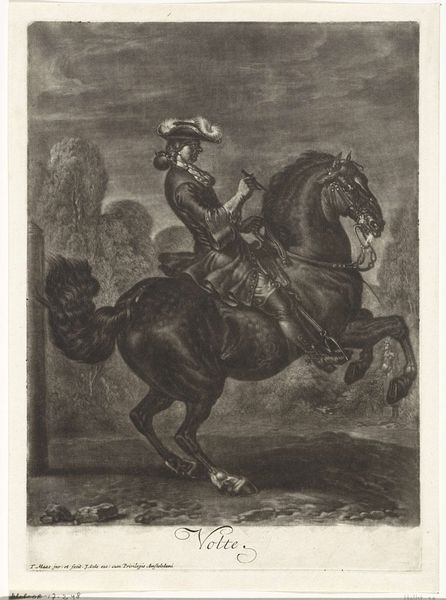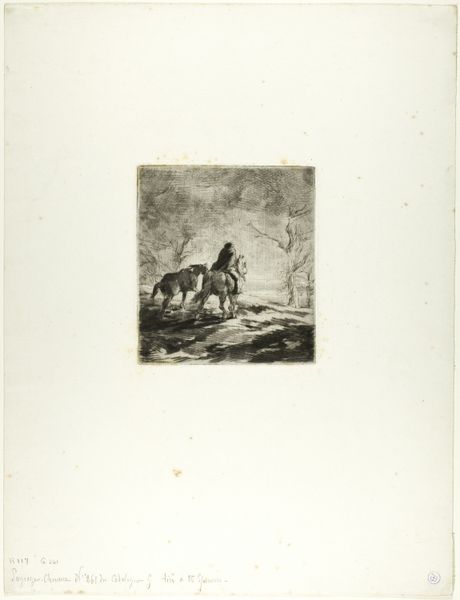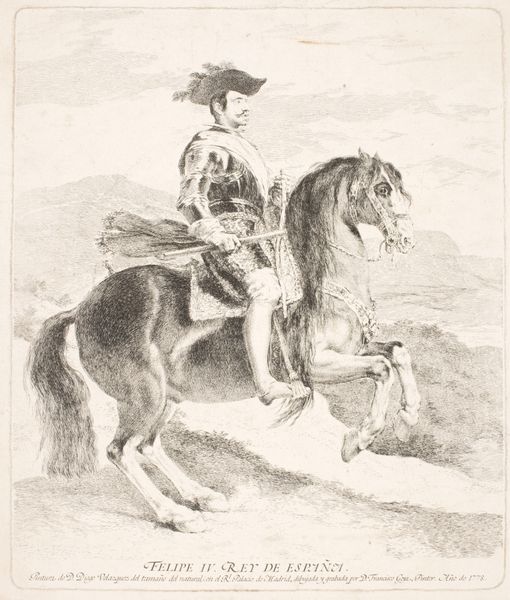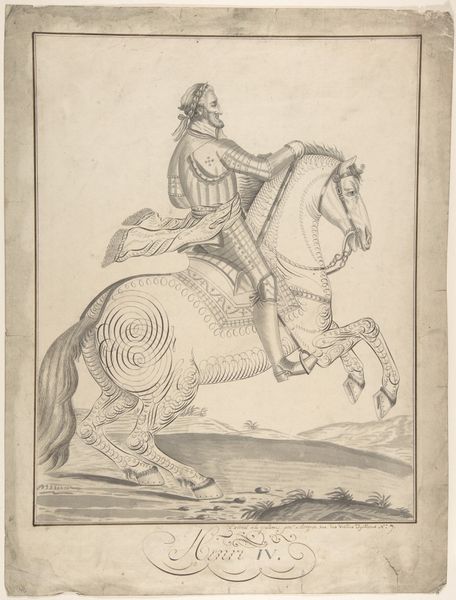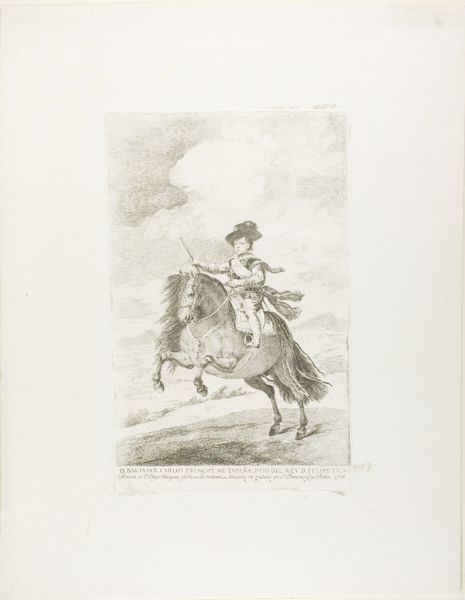
drawing, print, paper, engraving
#
portrait
#
drawing
# print
#
figuration
#
paper
#
archive photography
#
united-states
#
history-painting
#
academic-art
#
engraving
#
realism
Dimensions: 162 × 126 mm (image); 281 × 194 mm (sheet)
Copyright: Public Domain
Editor: Here we have Timothy Cole’s print, “Duke of Olivares,” created in 1904. The subject and its rearing horse immediately grabbed my attention. What’s your read on this piece? Curator: It’s a fascinating example of how historical figures are reimagined through art and printmaking. This engraving, based on an original painting, puts Olivares—a powerful figure in 17th-century Spain—on display for a modern, likely American, audience. Consider the implications of reproducing and circulating such imagery. Who was the intended audience, and what was the message Cole was hoping to convey? Editor: So, more than just an aesthetic copy, it’s making a statement? Was the Duke of Olivares a well-known figure at the time in the US? Curator: Perhaps less well-known than a king or queen, but he represented Spanish power. Think about America in the early 20th century: rapidly industrializing, grappling with its own imperial ambitions. Prints like this provided a visual connection to European history, a way to understand power, leadership, and even the “weight” of history. Is there anything about the visual style that seems pertinent in understanding the piece's purpose? Editor: Well, the realism is quite striking, almost photographic in its detail for a print. Maybe a way to appear more authentic and trustworthy? Curator: Precisely. The choice to employ a realistic style adds to its authoritative aura. It suggests historical accuracy and importance, legitimizing not only the Duke, but the narrative surrounding him and by extension Cole’s own role in presenting it. It invites consideration as a reliable depiction of power. Editor: I never would have considered all those layers of meaning. I was initially taken by the visual impact. Curator: Exactly! And it’s by questioning those initial responses that we understand how the work is interacting with both past and present cultures.
Comments
No comments
Be the first to comment and join the conversation on the ultimate creative platform.
